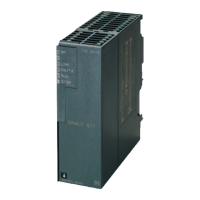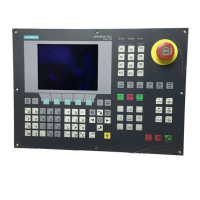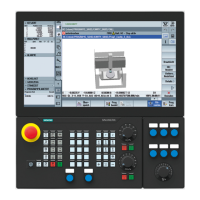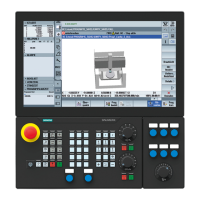Installing and putting a SINAUT modem into operation
5.7 Analog dial-up modem MD3
Station control system
250 System Manual, 07/2009, C79000-G8976-C178-07
For the connection from the TIM to the first MD3, the 6NH7701-4DL standard connecting
cable is used. For the connection to the other modems, there is no preassembled connecting
cable available. These can, nevertheless, be implemented with the standard components
from the SIMATIC S7 range. The same parts can be used as when creating an MPI
connection. As cable, we recommend 6XV1830-0AH10, and as connector 6ES7972-0BA11-
0XA0. When necessary, the RS-485 terminating resistor can be activated in this connector.
Note
Any TIM with an RS-232 port can be used, in other words, the TIM 3V-IE variants, the
TIM 4R-IE and all TIM 4 types.
Note
Do not forget to activate the terminating resistor for the RS-485 bus on the last connector
using the slider switch.
RS-485 operation of the MD3
If several MD3s are connected in parallel over the RS-485 port, remember the following
when making the settings for the modem and setting the parameters for the TIM:
1. The MD3 modem must be set to profile 15 using the 10-pin DIL switch.
2. Make sure that this user-configurable profile 15 is set so that it is suitable for RS-485
mode using a PC and terminal program.
3. The RS-485 interface must also be activated at the 4-pin DIL switch accessible from
below.
4. The RS-485 interface of the TIM connected to the MD3 modem must also be activated at
the 8-pin DIL switch accessible from above (applies to all TIM 4 types).
5. Since data traffic can only handled in half duplex over RS-485, the mode of the
connected TIM must be set to half duplex.
6. Once the MD3 has received data and forwarded it to the TIM, the MD3 requires a pause
of several ms before it is ready to send data. The TIM must take this pause into account
by setting an RTS/CTS delay; in other words, after receiving data it must only start
transmitting data after the RTS/CTS delay has expired. The duration of the delay
depends on the transmission speed being used on the dedicated line (see table below).
Table 5- 37 RTS/CTS delay for MD3 in RS-485 mode
Speed on the dedicated
line
RTS/CTS delay Speed on the dedicated
line
RTS/CTS delay
300 bps 100 ms 14400 bps 10 ms
1200 bps 100 ms 19200 bps 10 ms
2400 bps 50 ms 26400 bps 10 ms
9600 bps 25 ms 33600 bps 10 ms

